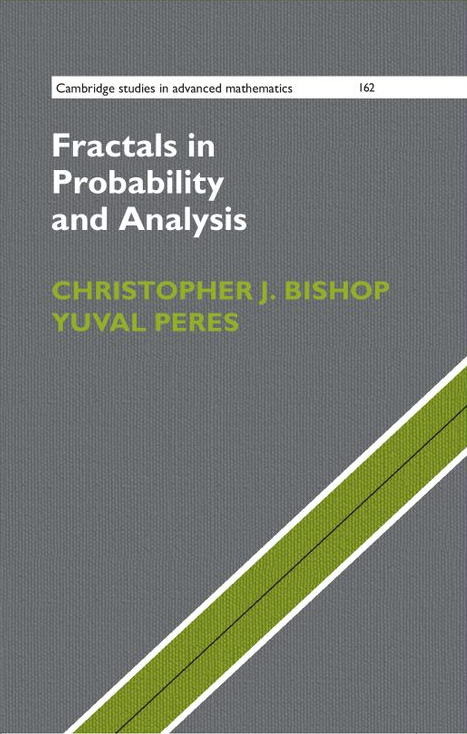Fractals in Probability and Analysis

By Christopher J. Bishop and Yuval Peres
Description:
This is a rigorous introduction to fractals, designed to acquaint the reader with the methods of analyzing them and many of their appearances in harmonic analysis and probability theory. The first two chapters develop the basics of several dimension notions: Hausdorff, Minkowski and packing dimensions. The theory is interspersed with accessible examples, such as sets defined by digit restrictions and self similar sets. Chapter 3 presents the connection between Hausdorff dimension and potential theory, along with applications to slicing and projection theorems. Self-affine sets, treated in Chapter 4, are less well known than self-similar sets, but even more intriguing; in particular, their Hausdorff and Minkowski dimensions usually differ.
Chapter 5 focuses on the dimension of graphs, including the celebrated Weierstrass functions. It is followed by two chapters developing Brownian motion from first principles and emphasizing its fractal character.
These include an unusual proof of the conformal invariance of planar Brownian motion in the spirit of Lévy and Kakutani, avoiding stochastic calculus. Chapter 8 on discrete fractals is followed by the highlights of the book: Chapters 9 and 10. Chapter 9 presents Kakeya sets, that contain line segments in every direction despite having zero area, and Chapter 10 presents a new approach to Peter Jones’ traveling salesman theorem, which gives a local characterization for rectifiability. The book contains numerous exercises, many of them challenging, and is suitable for a graduate course; the only prerequisite is a solid understanding of measure theory. Indeed, the book originated in courses taught by the authors at Yale, Stonybrook, the Hebrew University and Berkeley.
- Webpage of the book at publisher’s website, with reviews >>
- Das, Tushar (November 2017). “Review”. MAA Reviews.
- Buy the book on Amazon >>
- Link to PDF of the book >>